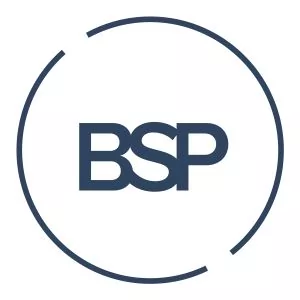- within Employment and HR, Wealth Management and Insolvency/Bankruptcy/Re-Structuring topic(s)
The Draft
Within the framework of Directive 2011/61/EU of the European Parliament and of the Council of June 8th 2011 on alternative investment fund managers ("AIFMD"), the European Securities and Markets Authority ("ESMA") issued the Draft regulatory technical standards (the "RTS") on types of AIFMs on April 2nd 2013.
The RTS aims to clarify the concepts of "AIFM of open-ended AIF(s)" and of "AIFM of closed-ended AIF(s)", ("AIF" being an alternative investment fund within the meaning of the AIFMD).
The distinction between these two concepts has a huge impact on the application on the AIFMs of the liquidity management rules, the valuation procedures and the transitional provisions laid down in the AIFMD.
An AIFM of open-ended AIF(s) is an AIFM which manages at least one AIF, some or all of whose unitholders or shareholders have the right to redeem their units / shares (i) at least once a year, and (ii) in accordance with the fund documents, at a price which is close to the net asset value of the unit / share to be redeemed. For the purposes of the latter, it is considered that action taken by AIFMs in order to ensure that the price of units / shares on stock exchanges does not significantly differ from their net asset value is regarded as equivalent to the right to redeem shares. To the contrary, the existence of lockup periods and of restrictions on redemptions due to the illiquid nature of assets (e.g. side pocket investments) does not prevent the AIFM from qualifying as AIFM of open-ended AIF.
An AIFM of closed-ended AIF(s) is an AIFM managing an AIF which is not complying with the foregoing. Furthermore, when there is a change in the redemption policy that transforms an open-ended AIF into a closed-ended AIF, or vice-versa, the new rules become applicable upon such transformation.
The Final Report
Within the framework of Directive 2011/61/EU of the European Parliament and of the Council of June 8th 2011 on alternative investment fund managers ("AIFMD"), the European Securities and Markets Authority ("ESMA") issued on May 24th 2013 its final report on guidelines on key concepts of the AIFMD (the "Guidelines").
ESMA requires the national supervisory authorities to incorporate such Guidelines into their supervisory practices in order to ensure mainly the common, uniform and consistent application of the concepts that comprise the definition of alternative investment fund ("AIF") in Article 4(1)(a) of the AIFMD.
Pursuant to the AIFMD, all AIF shall have a single AIFM to which the requirements of the AIFMD apply. It is therefore imperative for an investment vehicle, which is not an undertaking for collective investment in transferable securities within the meaning of directive 2009/65/EC, to assess whether it qualifies as an AIF or not. ESMA has been assigned the task to draft the Guidelines in order to clarify the elements of definition of an AIF and to ensure that the scope of the AIFMD is uniform across the European Union.
The AIFMD defines an AIF as a collective investment undertaking which raises capital from a number of investors, with a view to investing it in accordance with a defined investment policy for the benefit of those investors and does not qualify as an undertaking for collective investment in transferable securities within the meaning of directive 2009/65/EC. Such concepts are now clarified in the Guidelines.
- In a nutshell, the Guidelines describe the following concepts:
-
- "collective investment undertaking" is an undertaking:
- which does not have a general commercial or industrial purpose;
- which pools together capital raised from its investors for the purpose of investment;
- which invests capital with a view to generating a pooled return for those investors; and
- whose unitholders or shareholders of the undertaking - as a collective group - have no day-today discretion or control;
- "raising capital" consists in the commercial activity of taking direct or indirect steps to procure the transfer or commitment of capital by one or more investors to the undertaking for the purpose of investing it in accordance with a defined investment policy;
- "number of investors" consists in the potential of the undertaking to have more than one investor, even if the undertaking has actually only one investor ; and- "defined investment policy" is about having a policy on how the pooled capital in the undertaking is to be managed to generate a pooled return.
Finally, the Guidelines further state that if a single compartment on an investment vehicle qualifies as AIF, then the whole investment vehicle is to be considered as an AIF.
The content of this article is intended to provide a general guide to the subject matter. Specialist advice should be sought about your specific circumstances.


